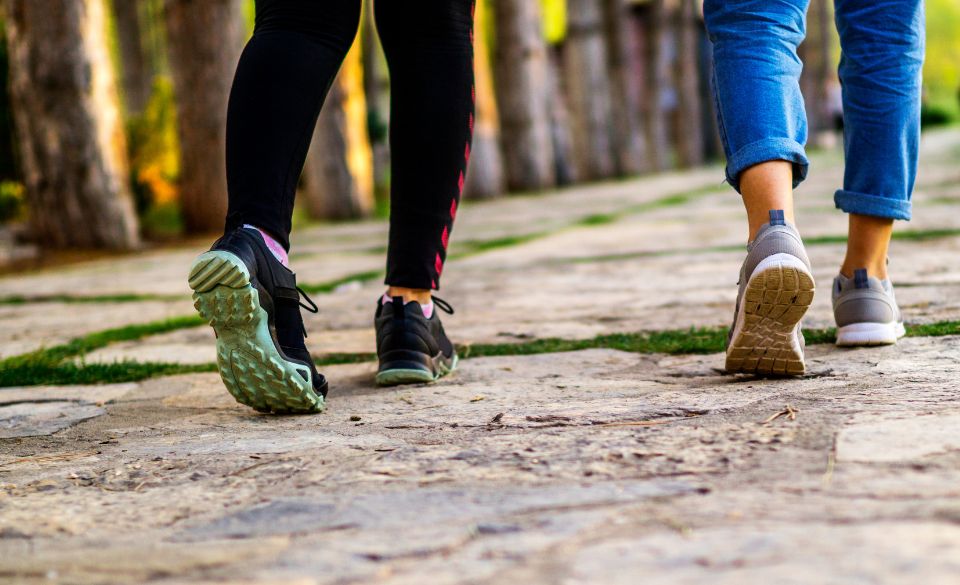
The Surprising Benefits of Walking Backwards: A Guide to This Unique Exercise
Page Contents
Walking backwards may seem like a strange exercise, but it can actually offer a variety of benefits for your health and fitness. In this article, we’ll explore the surprising benefits of walking backwards, and how you can incorporate this unique exercise into your workout routine.
Improved Balance and Coordination
Walking backwards can be an effective way to improve your balance and coordination. When you walk backwards, you have to rely on your body’s proprioceptive system, which is responsible for sensing your body’s position in space and making adjustments to maintain balance.
Proprioception is an important aspect of balance and coordination, and walking backwards can help improve this system. By challenging your body to move in a different way, walking backwards forces your muscles and nervous system to work together in new and challenging ways, which can lead to improved balance and coordination.
Walking backwards also requires greater spatial awareness than walking forwards, as you have to be more aware of your surroundings and anticipate obstacles. This can improve your reaction time and coordination, making you more agile and nimble in your movements.
Studies have shown that walking backwards can be an effective way to improve balance and reduce the risk of falls, particularly in older adults. One study found that walking backwards for just six minutes a day for three weeks improved balance and reduced the risk of falls in older adults.
Walking Backwards Engages Different Muscles
When walking forwards, the primary muscles used are those in the quads, hip flexors, and calves. However, when walking backwards, the primary muscles used are those in the glutes, hamstrings, and calves.
This is because walking backwards requires you to push off with your toes, which activates the calf muscles. At the same time, you are engaging the hamstrings to bring your leg back and the glutes to push your leg forward. This combination of movements results in a more intense workout for the lower body muscles.
In addition to the lower body, walking backwards also engages the muscles in the back and shoulders. This is because you need to maintain good posture and keep your head up to avoid obstacles while walking backwards. This engages the muscles in the upper back, shoulders, and neck, which can help to improve posture and reduce back pain.
Walking Backwards is a Low-Impact Exercise
Walking backwards is a low-impact exercise that is easy on the joints and can be a great option for people of all fitness levels. This type of exercise puts less stress on the knees, hips, and ankles than high-impact exercises such as running or jumping, making it a good choice for individuals who have joint pain or are recovering from an injury.
The low-impact nature of walking backwards also means that it can be a safe and effective form of exercise for older adults or those with balance issues. Studies have shown that walking backwards can help improve balance and reduce the risk of falls in older adults, making it a great option for maintaining mobility and independence as we age.
Cognitive Benefits of Walking Backwards
Walking backwards not only offers physical benefits but can also provide cognitive benefits. The increased coordination and spatial awareness required for walking backwards can help to improve brain function and cognitive performance.
When walking backwards, you are required to use your peripheral vision to keep an eye on your surroundings, as well as your coordination to maintain balance and spatial awareness. This engages both the brain and body in a unique way that can help to improve cognitive function and brain health.
In fact, a study published in the Journal of Cognitive Psychology found that walking backwards can improve memory and attention span in young adults. The study participants who walked backwards performed better on memory and attention tasks than those who walked forwards or stood still.
Another study published in the journal Experimental Brain Research found that walking backwards can increase brain activity and improve cognitive function in older adults. The study participants who walked backwards showed increased brain activity in the prefrontal cortex, a region of the brain associated with cognitive function and decision-making.
In addition to improving cognitive function, walking backwards can also help to reduce stress and improve mood. This is because physical exercise, in general, releases endorphins, which are natural mood-boosting chemicals in the brain.
How to Incorporate Walking Backwards into Your Workout
Incorporating walking backwards into your workout routine is a simple and effective way to challenge your body and improve your fitness. Here are some tips for incorporating walking backwards into your workout:
Start slow: Begin by walking backwards for short distances, such as 10 to 20 steps, and gradually increase the distance as your comfort level and balance improves.
Choose a safe location: Find a safe and open space to walk backwards, such as a track or a flat surface with no obstacles. It’s also important to have a spotter or someone to guide you until you feel confident walking backwards on your own.
Maintain good posture: Keep your shoulders back, chest open, and head up while walking backwards to maintain good posture and avoid injury.
Incorporate intervals: Walk backwards for a set amount of time, such as 30 seconds, and then turn around and walk forwards for the same amount of time. Repeat for several sets to create an interval-style workout.
Mix it up: Incorporate walking backwards into your regular cardio or strength routine, such as walking backwards on the treadmill or doing backwards lunges. This will help to challenge your muscles in new ways and prevent boredom.
Listen to your body: If you feel any discomfort or pain while walking backwards, stop immediately and rest. It’s important to listen to your body and not push yourself too hard, especially if you’re new to this type of exercise.
Overall, incorporating walking backwards into your workout routine is a fun and effective way to challenge your muscles and improve your fitness. By starting slow, maintaining good posture, and mixing it up with other exercises, you can reap the physical and cognitive benefits of walking backwards while minimizing the risk of injury.
Safety Precautions When Walking Backwards
Walking backwards can be a great way to improve your fitness and cognitive function, but it’s important to take safety precautions to avoid injury. Here are some safety tips to keep in mind when incorporating walking backwards into your workout:
1. Choose a safe location: Find a safe and open space to walk backwards, such as a track or a flat surface with no obstacles. It’s also important to have a spotter or someone to guide you until you feel confident walking backwards on your own.
2. Start slow: Begin by walking backwards for short distances, such as 10 to 20 steps, and gradually increase the distance as your comfort level and balance improves.
3. Maintain good posture: Keep your shoulders back, chest open, and head up while walking backwards to maintain good posture and avoid injury.
4. Use proper footwear: Wear comfortable and supportive footwear that provides good traction to prevent slips and falls.
5. Stay aware of your surroundings: Be aware of your surroundings and keep an eye out for any obstacles or potential hazards that may cause you to trip or fall.
6. Don’t overdo it: It’s important to listen to your body and not push yourself too hard, especially if you’re new to this type of exercise. If you feel any discomfort or pain while walking backwards, stop immediately and rest.
7. Warm up and cool down: Always warm up before starting your workout and cool down afterwards to prevent injury and reduce muscle soreness.
Overall, by taking safety precautions and listening to your body, you can safely incorporate walking backwards into your workout routine and reap the physical and cognitive benefits of this unique exercise.
Summing Up
In conclusion, walking backwards may seem like a strange exercise, but it can offer a variety of benefits for your health and fitness. By improving balance and coordination, engaging different muscles, offering low-impact exercise, providing cognitive benefits, and being easy to incorporate into your workout routine, walking backwards is a unique and effective exercise to add to your fitness regimen.



